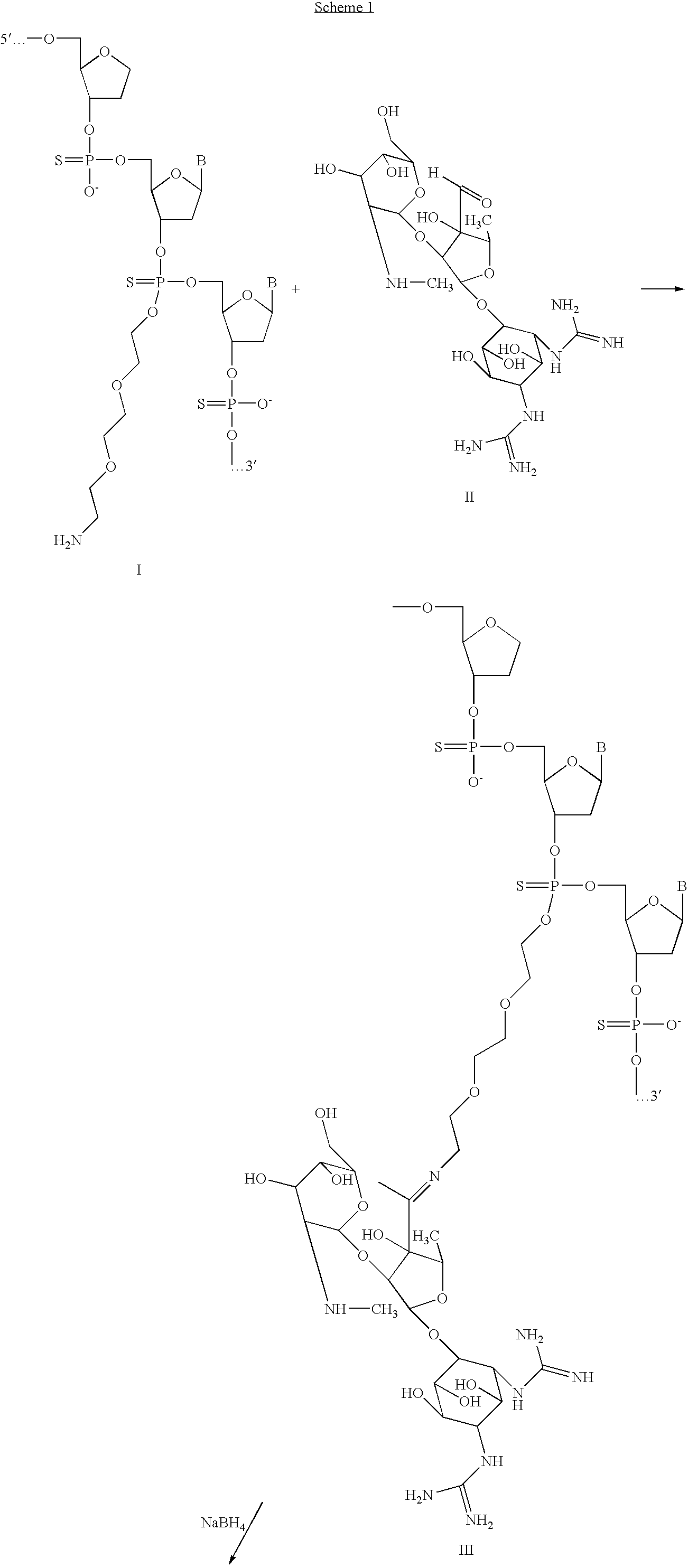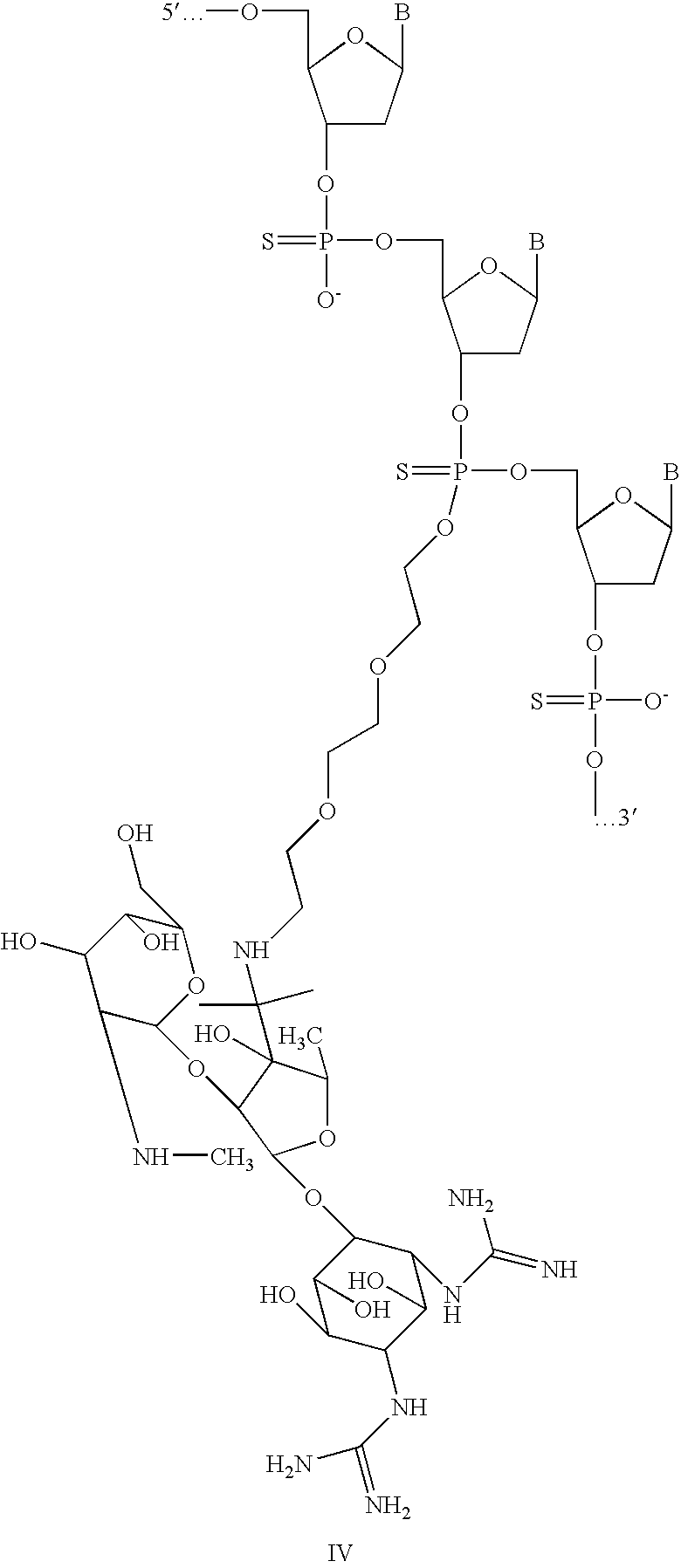New modalities for treatment of drug-resistant tuberculosis and other diseases
a tuberculosis and drug-resistant technology, applied in the field of tuberculosis treatment, can solve the problems of difficult penetration of antibiotics into the cell wall, and achieve the effects of inhibiting expression, enhancing antibacterial effects, and inhibiting bacterial growth
- Summary
- Abstract
- Description
- Claims
- Application Information
AI Technical Summary
Benefits of technology
Problems solved by technology
Method used
Image
Examples
example 1
Attachment of Streptomycin to an Internucleotide Thiophosphate
[0042]Attachment of streptomycin through an internucleotide thiphosphate is shown in Scheme 1. After reaction between primary amino group of oligo (I) and aldehyde group of Streptomycin (II) a Schiff base bond is formed. Reduction with NaBH4 can be used, if desirable, to strengthen covalent attachment of the oligomer to Streptomycin (IV).
[0043]As shown on schemes 1-4 below, streptomycin was attached to the oligonucleotide through amino linker at basic pH and Schiff base was reduced by NaBH4.
[0044]In schemes 1-4 are demonstrated structurally different conjugates of an oligonuleotide to the streptomycin which could be divided into two groups: a chemically stable one, and one slowly degradable in a physiological environment. Prior to reduction of Schiff bases (components III, II, II and II in schemes 1-4 accordingly could be reversible in conditions close to physiological, and therefore the oligonucleotide could serve as a c...
example 2
Attachment of Streptomycin to an Oligonucleotide at the 5′ End
[0045]Attachment of streptomycin to an oligonucleotide at the 5′ end is shown in Scheme 2. After reaction between 5′ primary amino group to streptomycin conjugate through a Schiff base bond (I) is formed, which later was reduced with NaBH4 and a firm conjugate of oligo to streptomycin (II) formed.
example 3
Attachment of Streptomycin to an Oligonucleotide at the 3′ End
[0046]Attachment of streptomycin to an oligonucleotide at the 3′ end is shown in Scheme 3. Reduction of Streptomycin conjugate to the oligo through a Schiff base bond (I) was done with NaBH4 and firm conjugate of oligomer to streptomycin (II) was formed. Conjugate of streptomycin to the oligomer through a Schiff base bond (I) was formed as is shown in scheme 2.
PUM
| Property | Measurement | Unit |
|---|---|---|
| length | aaaaa | aaaaa |
| bond lengths | aaaaa | aaaaa |
| size | aaaaa | aaaaa |
Abstract
Description
Claims
Application Information
 Login to View More
Login to View More - R&D
- Intellectual Property
- Life Sciences
- Materials
- Tech Scout
- Unparalleled Data Quality
- Higher Quality Content
- 60% Fewer Hallucinations
Browse by: Latest US Patents, China's latest patents, Technical Efficacy Thesaurus, Application Domain, Technology Topic, Popular Technical Reports.
© 2025 PatSnap. All rights reserved.Legal|Privacy policy|Modern Slavery Act Transparency Statement|Sitemap|About US| Contact US: help@patsnap.com



